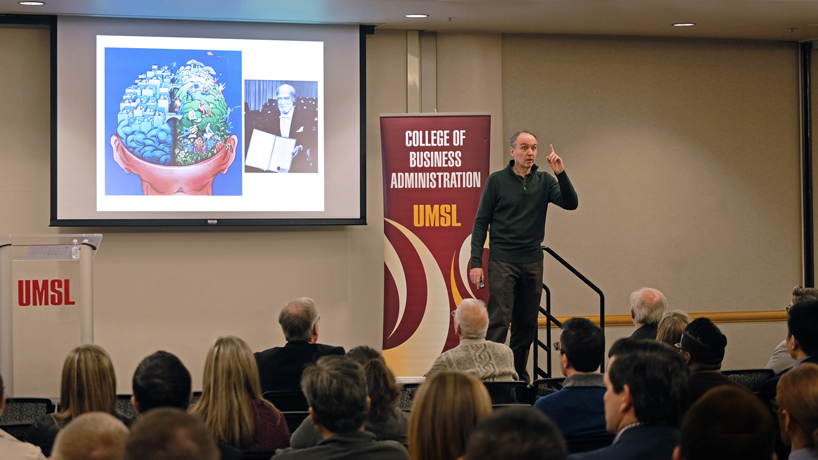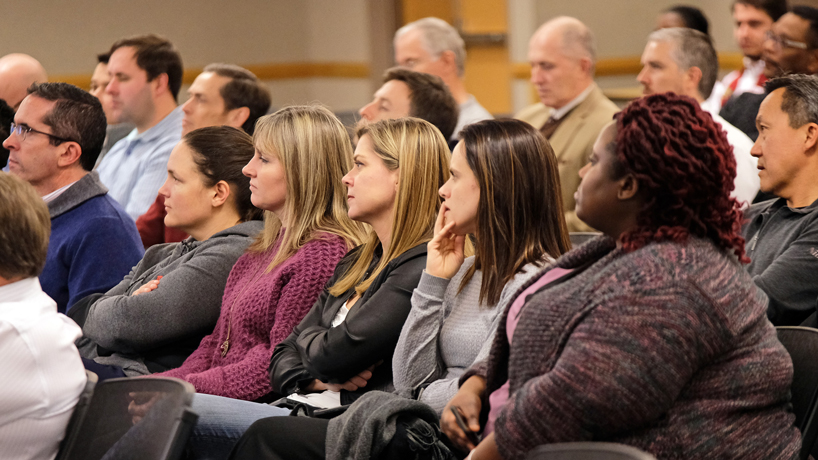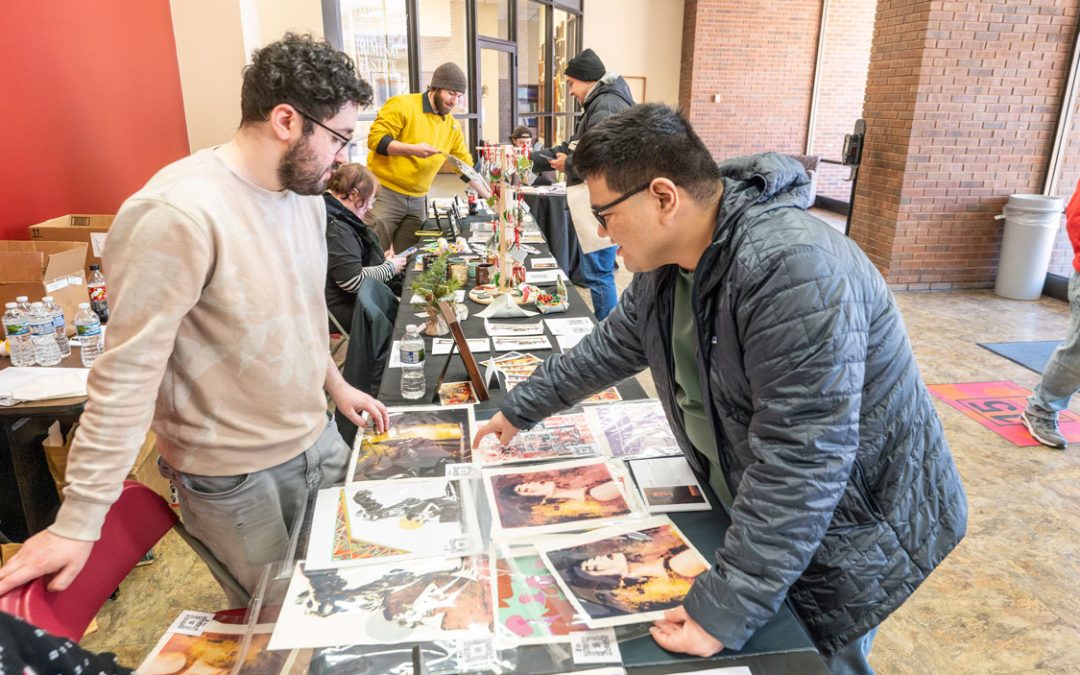
Columbia Business School lecturer William Duggan discusses modern science’s understanding of how ideas are created in the human mind during a presentation titled “Strategic Intuition: The Key to Innovation” on Friday in the Century Rooms of the Millennium Student Center. (Photos by August Jennewein)
William Duggan has published five books on strategic intuition since joining the faculty of Columbia Business School in 2001.
He packed as much of that insight as he could into a lively 75-minute lecture titled “Strategic Intuition: The Key to Innovation” last Friday in the Century Rooms of the Millennium Student Center at the University of Missouri–St. Louis.
Nidec Motor Corporation sponsored the event along with UMSL’s Doctor of Business Administration program, and it still drew dozens on a snowy night.
Duggan borrowed wisdom from the great inventor Thomas Edison near the opening of his talk.
“Genius is 1 percent inspiration and 99 percent …” Duggan said before letting his audience finish the sentence.

A few dozen people braved the snowy weather and were in attendance at the Millennium Student Center.
“Perspiration,” the crowd answered on cue.
“I think what he’s saying is any idea worth doing needs two things, including 99 percent perspiration – a tremendous amount of hard work,” Duggan said. “I agree with him completely.
“That is not our subject this evening. Our subject is the 1 percent, the inspiration. It’s only 1 percent, but it’s the brains of the operation. Inspiration gives you the idea, and perspiration makes it happen. Perspiration without inspiration is a waste of time.”
Duggan described the process that typically produces great ideas, including bringing together examples from history, having presence of mind, getting a flash of insight and resolution to make the idea a reality.
In particular, Duggan described how new ideas are almost always old ideas applied in different combinations or to address different problems. He pointed to great strategists and inventors from Napoleon and Henry Ford to Steve Jobs and Google founders Larry Page and Sergey Brin and showed how they all borrowed from others in solving new problems in creative ways.
As Duggan explained, even Edison himself didn’t truly invent the light bulb he’s most associated with or most of the other things covered by his more than 2,000 patents worldwide. But he did solve the puzzle of how to produce one that could be commercially viable.














